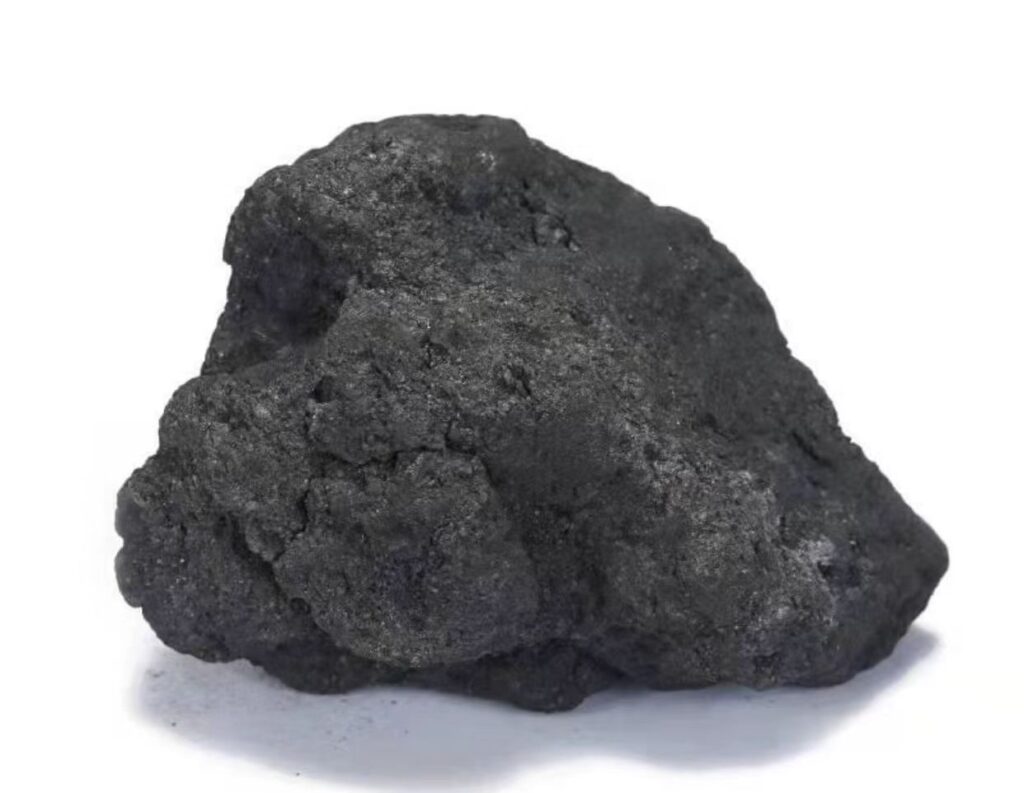黒鉛は天然に存在する炭素の一種。そのユニークな性質と電気を通す能力により、多くの産業で広く使われています。このブログでは、グラファイトがなぜ電気をよく通すのか、その利点とさまざまな用途についてご紹介します。
目次
トグル
はじめに
黒鉛は、六方格子状の炭素原子からなる炭素の同素体である。中国、インド、アメリカなど、世界の多くの地域で天然に産出する鉱物である。黒鉛は、柔らかく、黒く、光沢のある鉱物で、潤滑特性と電気を通す能力で知られている。
黒鉛は非常に用途の広い材料である。eafのような様々な産業で使用されている。 製鋼製造、エレクトロニクス。また、ある種の バッテリー塗料、潤滑剤。黒鉛はまた、難燃剤、断熱材、耐火剤などの耐火材料にもなる。
黒鉛は電気をよく通すか?
はい。グラファイトは、そのユニークな分子構造から優れた電気伝導性を持ち、電気をよく通す。この特性は、価電子、各炭素原子の個々の電子、材料内の自由電子の存在など、いくつかの要因に起因する。
グラファイトでは、炭素原子は多数の炭素原子が存在する六角形の格子状に配置されている。格子内の各炭素原子は、結合に関与する電子である4個の価電子を担っている。これらの価電子は固体の共有結合に関与し、炭素原子をつないで六角環を形成している。
しかし、グラファイト構造の層内には、共有結合に関与せず、炭素原子にゆるやかに保持されている自由電子も存在する。これらの自由電子は可動性があり、グラファイト構造の層内を自由に移動することができる。
その結果、グラファイトは高い電気伝導性を示し、自由電子が炭素原子から炭素原子へと素早く移動し、材料中を電流が効率よく流れるようになる。
黒鉛はなぜ電気を通すのか?
グラファイトは、"トンネリング "と呼ばれるプロセスによって電気を通すことができる。このプロセスにより、電子は直接接触することなくグラファイト格子内の炭素原子間を移動することができる。電子は格子内を "トンネル "し、あるビットから別のビットへと移動することができる。これにより、グラファイト格子を通して電気を効率的に伝送することができる。
また、グラファイトは表面積が大きく、電気を効率よく伝えることができる。これは、グラファイトの格子構造にたくさんの小さな穴があり、電気の情報を効率よく伝えることができるためである。黒鉛は、電池や電気部品など、高い電気伝導性を必要とする用途によく使われている。
黒鉛を導電体として使用する利点
第一に、分子構造により効率的な電気伝導体であり、抵抗が比較的低く、電子の動きをより助長する。
また、グラファイトは腐食や酸化に強く、ほとんどの化学薬品やガスと反応しない。低温では不活性で、450℃まで酸化しない。同時に、熱を効率よく伝えることができ、融点も高い。効率的な熱伝導体として、熱の迅速な移動に寄与する。
最後に グラファイト は高温での機械的強度を持つ。平均的な温度では機械的強度は高くないが、温度が上がるにつれて強度が増す。2000~2500℃では、機械的強度は常温の約2倍となり、その強度は他のどの素材よりも高い。例えば 黒鉛電極 は電気炉製鋼に使用される。
アプリケーション
黒鉛は多くのユニークな特性を持つ万能材料である。人類は19世紀から黒鉛を電気伝導体に使用しており、現代の黒鉛伝導体は様々な用途に使用されている。 人々は黒鉛を工業用としてよく使用する。 黒鉛電極半導体、バッテリー 燃料電池.また、携帯電話やコンピューターなどの家電製品や電気自動車にも使用できる。
電気伝導体としてのグラファイトの使用は、エネルギー効率の面でも有益である。グラファイトの電気抵抗が低いということは、熱として失われるエネルギーが少ないということであり、その結果、より効率的に電気を使用することができる。これは、エネルギーコストと排出量の削減に大きな影響を与える可能性があります。産業用途では 黒鉛電極 は、現在入手可能な唯一の導体原料である鉄鋼を製錬するための電気アーク炉で良導体として使用される。
結論
グラファイトは、そのユニークな分子構造と大きな表面積により、電気をよく通す。電気の伝導効率が高く、腐食や酸化にも強い。また、軽量で耐久性に優れているため、さまざまな用途に使用されている。



